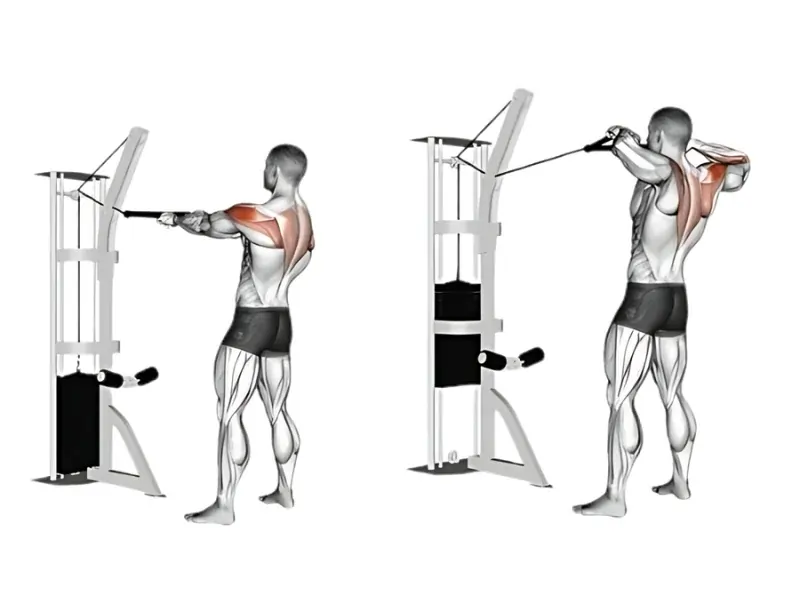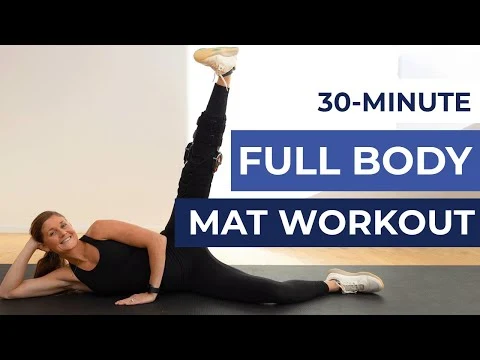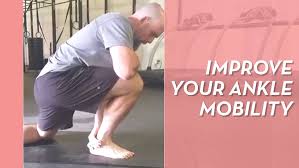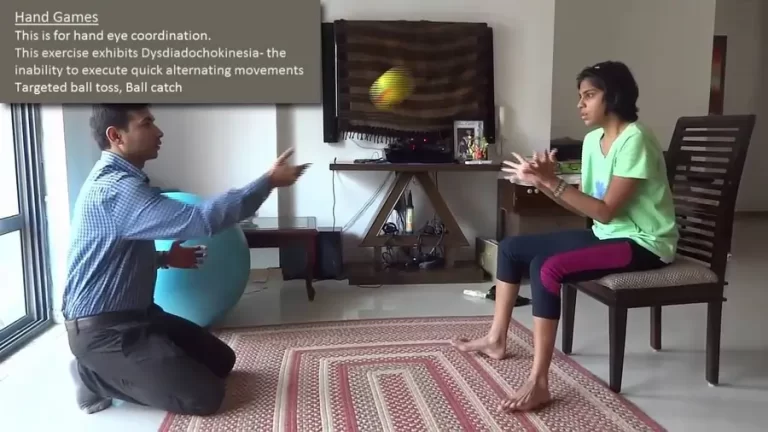12 Best Exercises For Lower Trapezius
The lower trapezius plays a vital role in shoulder stability, posture, and scapular movement. Strengthening this muscle helps prevent shoulder impingement, improves upper back posture, and supports overhead activities. Incorporating targeted exercises can enhance function and reduce the risk of injury.
Introduction:
Strengthening your trapezius is an essential component of any exercise program. This muscle contributes to the stability and movement of the scapula (shoulder blade).
Most people typically think of back exercises that target the lats or upper traps. However, posture, shoulder health, and general upper body strength are all greatly affected by the lower trapezius, a lesser-known but equally important component of the trapezius muscle. Poor posture, injury, and shoulder pain can all be caused by weak or underactive lower traps.
There are several reasons why the lower trapezius muscles are important. This muscle is primarily in charge of scapular depression, which is essential for a number of overhead exercises and involves pulling your shoulder blades downward.
Next, both scapular retraction and adduction the process by which your shoulder blades move together toward the center of your body require a strong lower trapezius muscle.
Benefits of Exercise:
Fantastic exercise that targets the lower trapezius has some incredibly overlooked advantages. The lower traps are essential for posture, shoulder function, and even athletic performance, yet most individuals just concentrate on the top traps or lats.
Improves Posture
- Helps in correcting tech neck and forward head position, which is typical with desk employment and phones.
Prevents Dominance of the Upper Trap
- Unbalances, headaches, and neck strain can result from overactive upper traps.
- By balancing the shoulder girdle, strengthening the lower traps helps to relieve upper back and neck tension.
Improves the Stability of the Shoulders
- The scapula is stabilized by the lower traps, particularly while pulling or performing overhead motions.
- Reduces the likelihood of impingement and rotator cuff problems.
- Important to anyone performing pull-ups or overhead presses, weightlifters, swimmers, and climbers.
Prevents and Rehabs Injuries
- Important in shoulder rehabilitation physical therapy regimens (particularly for scapular dyskinesis, impingement syndrome, and rotator cuff injuries).
Preventing injuries, particularly to the neck and shoulders
Poor scapular mechanics and overcompensation from other muscles, such as the following, are caused by weak lower traps:
- The upper traps
- Levator scapulae
- Pecs and deltoids
When the lower traps are strengthened, imbalances are corrected, and the danger of:
- Shoulder impingement
- Rotator cuff strains
- Neck stiffness and headaches
Lessons Neck and Upper Trap Tension
- Due to lower trap weakness, many people abuse their upper traps.
- The upper traps can relax and stop compensating when the lower traps are strengthened.
Improves Sports Performance
- Better sports mechanics are correlated with proper scapular function:
(Basketball, baseball) Throwing
Swimming (period of arm healing)
CrossFit, gymnastics, and calisthenics
- Stronger, safer overhead motions and more effective kinetic chains are the results of lower trap activation.
Exercises For Lower Trapezius:
Resistance Band Y Pulls
Resistance Band Y Pulls are a great way to work the lower trapezius muscles, and help in improving posture and maintain your shoulder blades.
- Use a low anchor to secure a resistance band, such as beneath your feet or a low anchor on a wall.
- Take hold of the band’s handles or ends with both hands, palms down (overhand grip).
- Arms extended toward the base, stand or kneel erect.
- With your arms extended in front of you and the band taut, begin.
- To create a “Y” shape with your body, pull your arms up and out diagonally, just like you would when doing the “Y” posture.
- Next, squeeze your shoulder blades.
- Squeeze the lower traps while pausing at the top, then slowly go back to the beginning position.
- Then relax.
- Repeat these exercises 5 to 10 times.
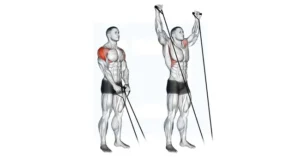
Barbell deadlift
Although the barbell deadlift is mainly recognized for its ability to strengthen the glutes, hamstrings, and lower back, when performed correctly, it also significantly engages the lower trapezius, particularly as part of the posterior chain and scapular stabilization.
- Bar above midfoot, feet hip-width apart.
- Grasp the bar slightly above your knees.
- Engage your lower traps by pulling your shoulder blades back and down, as if you were tucking them into your back pockets.
- Pull the bar firmly into your body while lifting, keeping your scapulas retracted and lowered.
- As the weight shifts, the scapula is stabilized and controlled by the lower traps.
- Keep your shoulders back and down and avoid shrugging; don’t overextend.
- Then return to your neutral position.
- Then relax.
- Repeat these exercises 5 to 10 times.
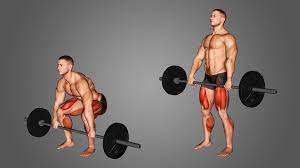
Overhead farmer’s walk
The Overhead Farmer’s Walk is a fantastic functional exercise that works your entire shoulder girdle, core, and stabilizers, as well as your lower trapezius. The lower traps have to put in extra effort to keep your shoulder blades stable and depressed because you’re holding the weights up.
- Take out two dumbbells.
- Maintaining your arms fully extended and level with your ears, press them overhead.
- Use your lats, glutes, and core to help you stabilize.
- Take it carefully and steadily for 20 to 40 yards (30 to 60 seconds).
- Keep your scapulae drawn down and slightly together, and keep your shoulders packed down (don’t shrug!).
- Remain upright and refrain from swinging or swaying.
- Then return to your neutral position.
- Then relax.
- Repeat these exercises 5 to 10 times.
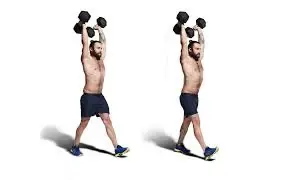
Wall angels
For those who spend a lot of time bent over, wall angels are a simple yet incredibly effective bodyweight exercise that helps increase shoulder mobility, target the lower trapezius, and correct posture.
- With your feet a few inches apart and bending your knees, rest your back against a wall.
- Keep your upper arms parallel to the floor and raise your elbows to a 90-degree angle.
- It is also important to keep hands and elbows in touch with the wall.
- Try to maintain your hands and elbows against the wall while you slowly raise your arms upwards in a “snow angel” manner.
- Without letting your arms hang off the wall or arching your back, raise yourself as high as you can.
- Throughout, maintain a lowered and retracted shoulder blade position because this is where the lower traps activate!
- Then return to your neutral position.
- Then relax.
- Repeat these exercises 5 to 10 times.

Bent Over T
If performed correctly and with intention, the Bent Over T Raise is a very powerful exercise for the lower trapezius. You can adjust your scapular control and movement pattern to truly lighten those lower traps, even though it also works the middle traps and back delts.
- Get some light dumbbells or just your body weight.
- Almost parallel to the floor, bend forward at the hips, keep your back flat, and raise your chest.
- Place your arms palms in, just below your shoulders.
- Raise your arms straight out to the sides, with your thumbs pointing up or out.
- When lifting, keep your shoulder blades together and compressed.
- Avoid going over your shoulder; instead, keep your arms in line with them.
- Hold this position for a few seconds.
- Lower yourself back down slowly and carefully.
- Then return to your neutral position.
- Then relax.
- Repeat these exercises 5 to 10 times.
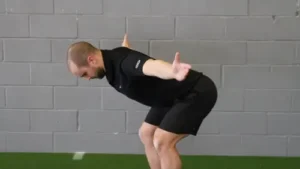
High pulley cable row
If you adjust the form and angles properly, the High Pulley Cable Row can be a very good exercise for targeting the lower trapezius. With the correct arrangement, you can move that activation down into the lower traps.
- Place the pulley at a 45–60° angle downward, above head height.
- Make use of a straight bar or rope attachment.
- With your arms extended upward and slightly forward, face the machine while seated on a bench or, if necessary, on your knees.
- Make sure your elbows move in a “Y” form, not pulled in like a last row, as you pull the cable down and back at a diagonal angle.
- Your shoulder blades should be tightened downward and together.
- When contraction reaches its highest point, pause for a moment before gradually going back to the beginning position.
- Then relax.
- Repeat these exercises 5 to 10 times.
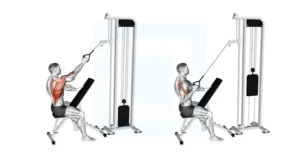
Push up
Push-ups, particularly when done correctly and with a focus on scapular control, may engage the lower trapezius.
- To start, place yourself on the floor in a plank posture.
- Hold your arms straight.
- Make sure you simply move your shoulder blades.
- As the shoulder blades press together (retraction), allow the chest to drop.
- Spread the shoulder blades apart (protraction) and push away from the floor.
- In the retraction and depression phase, lower traps come into action.
- Then return to your neutral position.
- Then relax.
- Repeat these exercises 5 to 10 times.
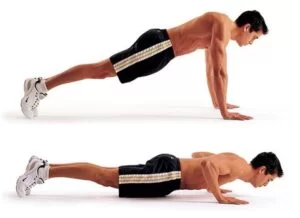
Prone Y Raise
One of the greatest isolation exercises for specifically working the lower trapezius is the Prone Y Raise. It’s easy, low-load, and ideal for correcting muscular imbalances, improving posture, and strengthening shoulders, particularly if you sit a lot or overuse your upper traps.
- Place yourself face down on a level or inclined bench (30 to 45° incline is ideal).
- Support yourself with extremely light weights (or none at all if you’re a beginner) and let your arms extend straight down.
- Make a “Y” formation with your arms at an angle of about 45 degrees from your head and your thumbs pointing up.
- With your arms up in a Y shape, compress your shoulder blades down and together.
- Focus on lowering the shoulder blades as you pause and hold for a few seconds at the top.
- Then return to your neutral position.
- Then relax.
- Repeat these exercises 5 to 10 times.
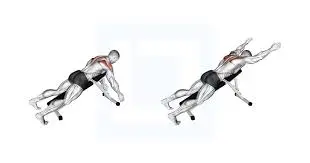
Superman Holds (Y Position)
A straightforward yet effective bodyweight exercise that specifically targets the lower trapezius is the Superman Hold in a Y Position. Without the use of any equipment, it is particularly useful for improving scapular stability, postural control, and general shoulder function.
- Begin by placing yourself face down on the floor.
- With your arms through your head at a 45-degree angle and your thumbs facing up, create a “Y” formation.
- Chin tucked (neutral spine), legs straight, and glutes softly engaged.
- Slowly raise your legs, arms, and chest a little off the floor.
- To maintain the Y shape, squeeze your shoulder blades together and down.
- Feel the lower traps activating.
- Hold this position for a few seconds.
- Then return to your neutral position.
- Then relax.
- Repeat these exercises 5 to 10 times.
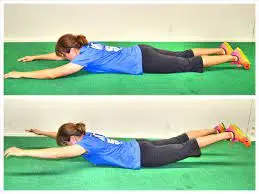
Straight arm dips
The Straight Arm Dip, when done with scapular retraction as the main focus, can be a surprisingly powerful bodyweight exercise for activating the lower trapezius.
- Make use of dip bars or parallel bars.
- Arms straight, shoulders over wrists, legs dangling freely, or knees bent if necessary, is the ideal position for a dip.
- As if you were trying to lengthen your neck, press your shoulders down from your ears from the top.
- Don’t bend your elbows.
- This is not a dip of the triceps; it is a shoulder blade movement.
- After a few seconds of holding at the bottom, gradually raise your shoulders again.
- Then return to your neutral position.
- Then relax.
- Repeat these exercises 5 to 10 times.
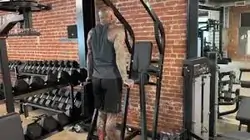
Dumbbell Snatch
Depending on how you complete and regulate the action, it’s also a surprisingly effective exercise for targeting the traps, particularly the lower trapezius.
- Maintain a shoulder-width distance between your feet.
- Bend your knees, flex at the hips, and grasp the dumbbell with one hand.
- The dumbbell is raised by pushing hard via your hips and legs.
- Pull high with your elbow and shrug your shoulder as the dumbbell rises.
- The arm finishes locked out overhead when you punch the dumbbell overhead in one continuous motion.
- Once the dumbbell is stabilized at its highest point, control it back down to the floor.
- Then return to your neutral position.
- Then relax.
- Repeat these exercises 5 to 10 times.

Rack Pulls
With proper form and concentration, rack pulls are a great way to work the upper back, especially the traps, but they can also work the lower traps. focusing on scapular retraction and depression throughout the lift is important for activating the lower traps with rack pulls.
- Place the barbell on a rack or blocks so that it begins at or near knee height.
- If you’d like, use a mixed grip or an overhand (pronounced) hold on the bar.
- To engage your lats and traps, pull your shoulder blades back and down while lifting.
- Focus on pushing through your heels while maintaining a strong core as you raise the bar.
- Continue to depress the scapula and refrain from shrugging your shoulders as you get closer to its highest point.
- At this point, the lower traps activate.
- Squeeze your shoulder blades down as though you were attempting to drag them into your back pockets at the highest point of the movement.
- Lower the bar gradually while keeping your scapula in check.
- Then return to your neutral position.
- Then relax.
- Repeat these exercises 5 to 10 times.

Which safeguards need to be taken when working out?
A common postural muscle that is neglected or undeveloped in many persons is the lower trapezius. It is essential to develop this area with good form, awareness, and advancement.
The following is what you should remember:
Provide a Secure Environment for Exercise
The chance of sliding, falling, or dropping equipment is increased in an unstable or crowded environment.
- Work out in a dry, clean, and non-slip environment.
- Eliminate any trip risks, such as loose carpets, cords, and shoes.
- For workouts like incline dumbbell work or prone Y raises, need a level, stable surface.
- Make sure the bench is stable and safe if you plan to use one.
- When moving on the floor, use non-slip mats.
Warming Up and Cooling Off
Muscle strain is possible when moving from a cold to an intensive position; if the cooldown is skipped, tightness or pain may develop.
- Start each session with five to ten minutes of mild aerobic exercise, such as walking, arm swings, or jumping jacks.
- Stretching that targets the shoulders, back, and thoracic spine should come next.
- Use mild static stretches to relax, paying particular attention to the chest, shoulders, and traps.
Pay Attention to Your Body
Chronic damage can result from ignoring pain or suffering.
- Differentiate between acute or joint pain (abnormal) and muscle burn (normal).
- Exercises can be changed or replaced as necessary.
- To verify technique and posture, think about using video or mirrors.
Keep Your Body Mechanics Correct
Shoulder, upper back, and neck strain can result from bad posture or movement patterns.
- Avoid tilting your head upward or hyperextending your lower back; instead, maintain a neutral spine.
- When doing trap-focused movements, refrain from shrugging.
- During every lift, use your glutes and core to keep your body stable.
- All exercises should be performed cautiously and slowly to avoid jerking or using speed.
Make Safe and Proper Use of Equipment
Injuries or muscular imbalances may result from improper use of dumbbells, resistance bands, or machines.
- Before using any equipment (counters, cables, bands, etc.), check it.
- Use resistance bands that aren’t torn or worn because they can break in the middle of a movement.
- Particularly for isolation exercises like Y raises, be sure the weights are manageable.
- Machines (incline benches or cables) can be adjusted to your body size and range of motion.
When required, use a spotter.
Even though the majority of lower trap workouts are easy, cables or incline dumbbell rises sometimes need help.
- When performing activities that are new or unfamiliar, especially when lying on an incline bench, have a spotter.
- Tell someone you’re working out, particularly if you’re working out alone and lifting larger weights.
Train at Your Current Level of Ability
Risk increases when advanced variations or high resistance are introduced too soon.
- Learn bodyweight techniques initially, such as Superman holds and wall slides.
- Use bands or modest weights until you are comfortable with your form.
- Increase intensity only once you have perfected your technique and control of your muscles.
Recognize any pre-existing conditions
If lower trap workouts are not modified, they could worsen shoulder conditions, neck problems, or spinal problems.
- If you are injured, speak with a doctor, physical therapist, or certified trainer.
- Stay away from activities that put excessive stress on weak joints or nerves.
- When necessary, use regressive or modified versions of the movements.
Prevent Exhaustion and Fatigue
Muscle exhaustion, particularly in minor stabilizer muscles like the lower traps, may affect form and increase the risk of injury.
- Recognize your limits and stop if you experience severe pain or extreme exhaustion.
- Between sets, take a 30- to 60-second break, or longer if necessary.
- Avoid doing intensive training on the same muscle group twice in succession.
Review Your Program Frequently
What is effective now might not be the best tomorrow, particularly if your goals change or you advance.
- Every four to six weeks, reassess your form, technique, and resistance level.
- Adjust your programming to your new objectives, level of weariness, or progress.
- Keep track of your workouts to keep an eye on your performance and safety.
When Is It Time to Stop Working Out?
While focusing on a particular muscle, such as the lower trapezius, which is essential for shoulder health and posture but frequently underused. The secret to preventing overtraining and maximizing results is knowing when to quit exercising during a session.
The following indicators and recommendations can help you decide when it’s time to stop:
Breakdown of Forms
It is necessary to perform lower trap exercises consistently.
- Your shoulders start to shrug as your upper traps take over.
- You begin to swing your body or use speed.
- The scapular movement is no longer under your control.
Shoulder pain or bad posture may result from compensating with other muscles, which decreases lower trap activation.
You’re Not Connecting Your Mind to Your Muscles
- Focus is required for lower traps.
- Stop using the target muscle if you no longer feel it working or if your mind-muscle connection is broken.
Focus on Muscle Weakness
Deep exhaustion or a burn should be felt beneath and between your shoulder blades.
- That fatigue develops into a sharp or dull ache.
- The lowest traps are not at all engaging.
Stop using it or go to a lighter version if you are unable to keep the mind-muscle connection going.
There’s Another Muscle Taking Over
If you begin to feel:
- More rear delts than traps
- Lats controlling the pull
- Frequently shrugging upper traps
This is an obvious biomechanical signal to stop or alter the motion.
Summary:
The lower trapezius is essential for shoulder stability, upper body strength, and posture. By incorporating these focused exercises to your regimen, you’ll increase your scapular control and steer clear of common issues like shoulder impingement and neck strain.
A strong lower trap is the foundation of improved movement and long-term joint health, whatever your occupation athlete, office worker, or fitness enthusiast. Don’t overlook it train wisely and regularly!
FAQ:
What symptoms indicate weak lower traps?
Typical indicators include:
Bad posture (forward head, rounded shoulders)
Neck or shoulder ache, particularly while moving overhead
Restricted range of motion in the shoulders
Having trouble keeping the shoulder blades back and down
Does strengthening the lower trapezius help reduce shoulder pain?
Indeed. In order to stabilize the shoulder blades, the lower traps are essential. By strengthening them, shoulder impingement and other associated problems can be avoided or lessened by lessening the strain on the rotator cuff and upper traps.
How frequently should my lower traps be trained?
Ideally, two to three times a week. The secret is regularity. Particularly when combined with mobility and postural exercises, these muscles react well to regulated strength training and activation activities.
What equipment is required for exercises that work the lower trapezius?
The lower traps can be trained with very little equipment:
Bodyweight (e.g., Superman holds, wall slides)
Resistance bands
Lightweight dumbbells
Machines that use cables (for face pulls)
Bench with an incline (for Y raises)
Do exercises that target the lower traps improve posture?
Of course. By pulling the shoulders back and down, strengthening the lower traps supports rounded or slouched postures. They are particularly important for those who spend a lot of time sitting down.
Are my upper traps or neck going to burn while performing these exercises?
No. Your lower traps may not be effectively activated as a result of compensating if you experience tightness in your neck or upper traps. Put your attention on using the right form and moving slowly.
How long does it take for lower trap training to show results?
Within three to four weeks of regular training (two to three times per week), you might notice improvements in your posture, shoulder stability, and level of stress. Depending on your total training regimen, the visual development of muscles could take longer.
Can lower trap exercises be used with other back workouts?
Yes. Upper-back and mid-back exercises complement lower-trap exercises well. They improve balance and scapular control, which makes them a good addition to pull-ups, rows, and other compound exercises.
How are Y raises and T raises different from one another?
By raising the arms in a Y shape that is, at an angle of around 45° Y Raises target the lower trapezius.
T-raises raise the arms straight out to the side, targeting the middle trapezius.
Are beginners able to perform these exercises?
Yes. For beginners, the majority of lower trap workouts are easy and low-impact. Avoid heavy lifting and concentrate on form and muscle engagement by beginning with body weight or minimal resistance.
References:
- Simple movements to improve the lower trapezius – CPT, 2018
- Standing y Lower-trap exercises: https://en-gb.hingehealth.com/resources/articles/
- Exercises for a Bigger, Better Back: 14 Traps – 2023 Nasm
- The best trap exercises can be found at https://row.gymshark.com/blog/article
- Top trapezius muscle workouts | Medbridge, 2025 Medbridge
- Ten lower trap workouts to improve equilibrium and stability in 2023-Z
- Learning how to perform lower trap exercises for better posture, strength, and pain management – Kings, Perez Grande, 2024
- Image 1, Change your shoulders by mastering the Magnante band Y-Raise exercise in 2024.
- Image 3, Neudecker’s 2024 Dumbbell Farmer’s Walk: Increase Mass and a Larger Engine
- Image 5, Take care of your weak hips now! Squat University’s Top 4 Strength and Stability Exercises for 2022: Get Rid of Pain!
- Image 6, Lift Manual for Cable Single Arm High Row: Overview, Advantages, and Form for 2023
- Image 8, Guide, Advantages, and Form for Prone y Raise 2023 Lift Manual
- Image 10, Straight-Arm Dip Tip | 33K views · 455 replies | ?? The straight-arm…
- Image 11, Lift Manual for Dumbbell One Arm Snatch: Instructions, Advantages, and Form for 2023
- Image 12, The rack pull technique – 2023 – Bullmore, Harris-Fry

